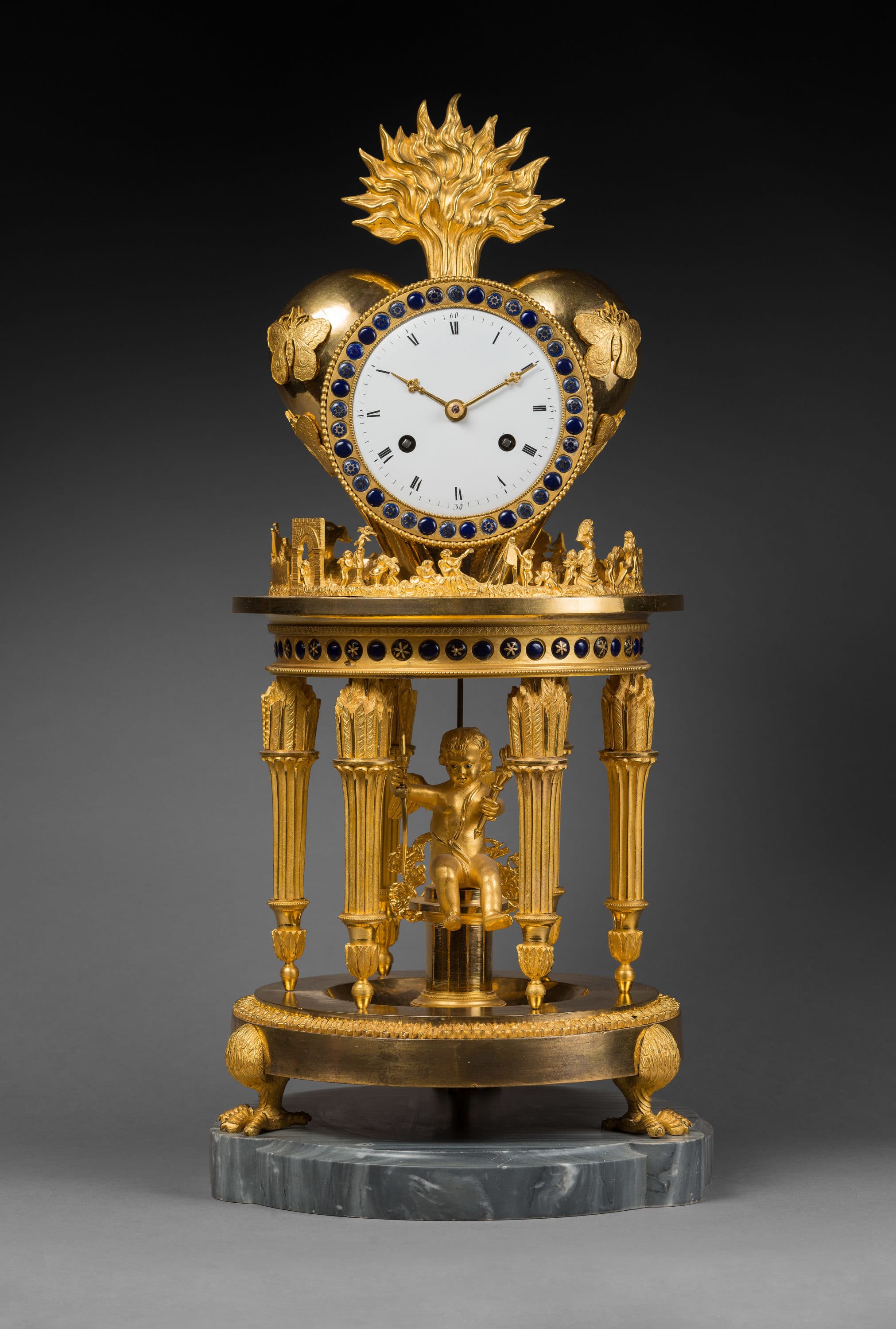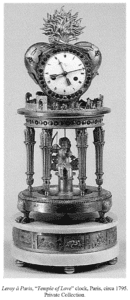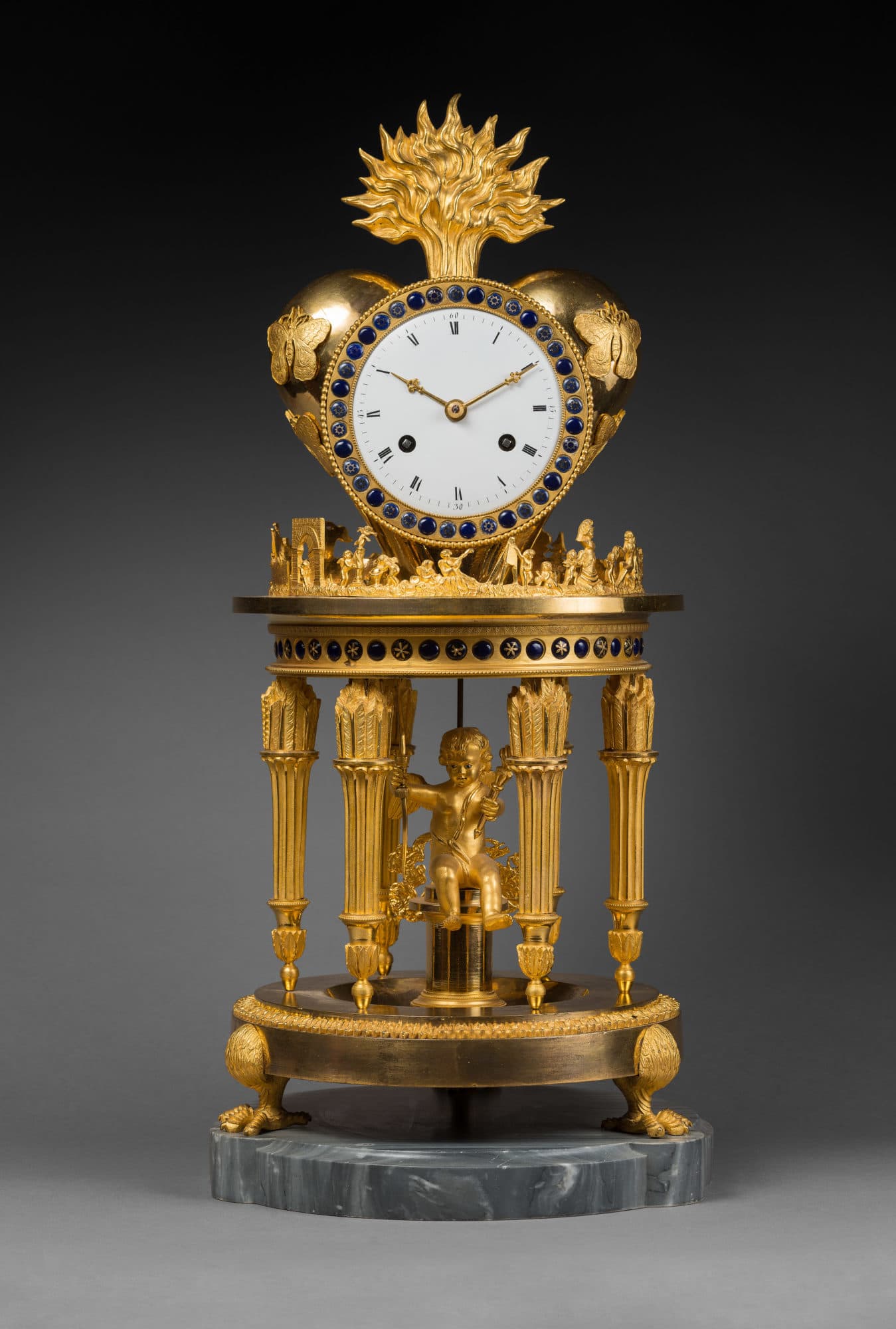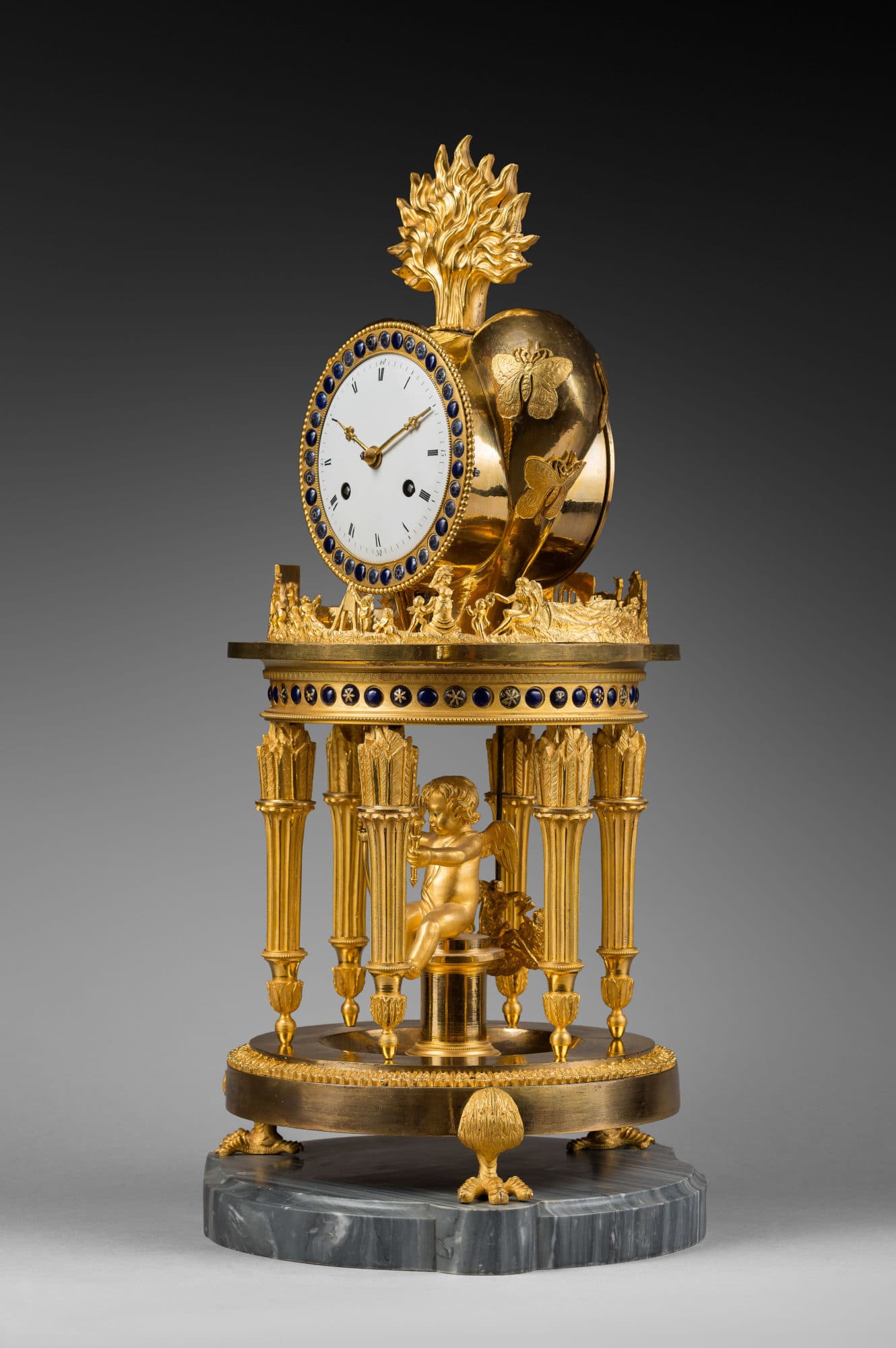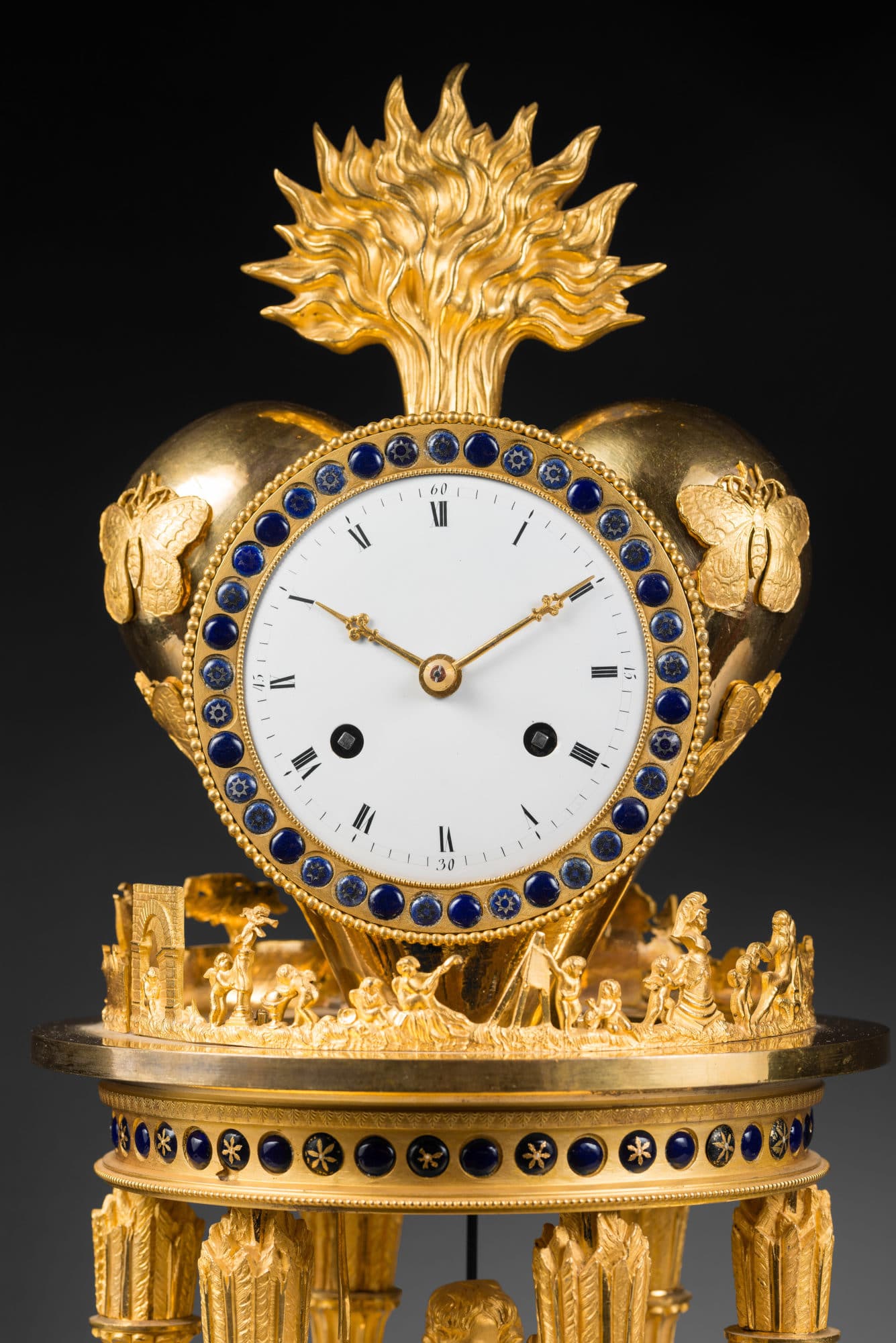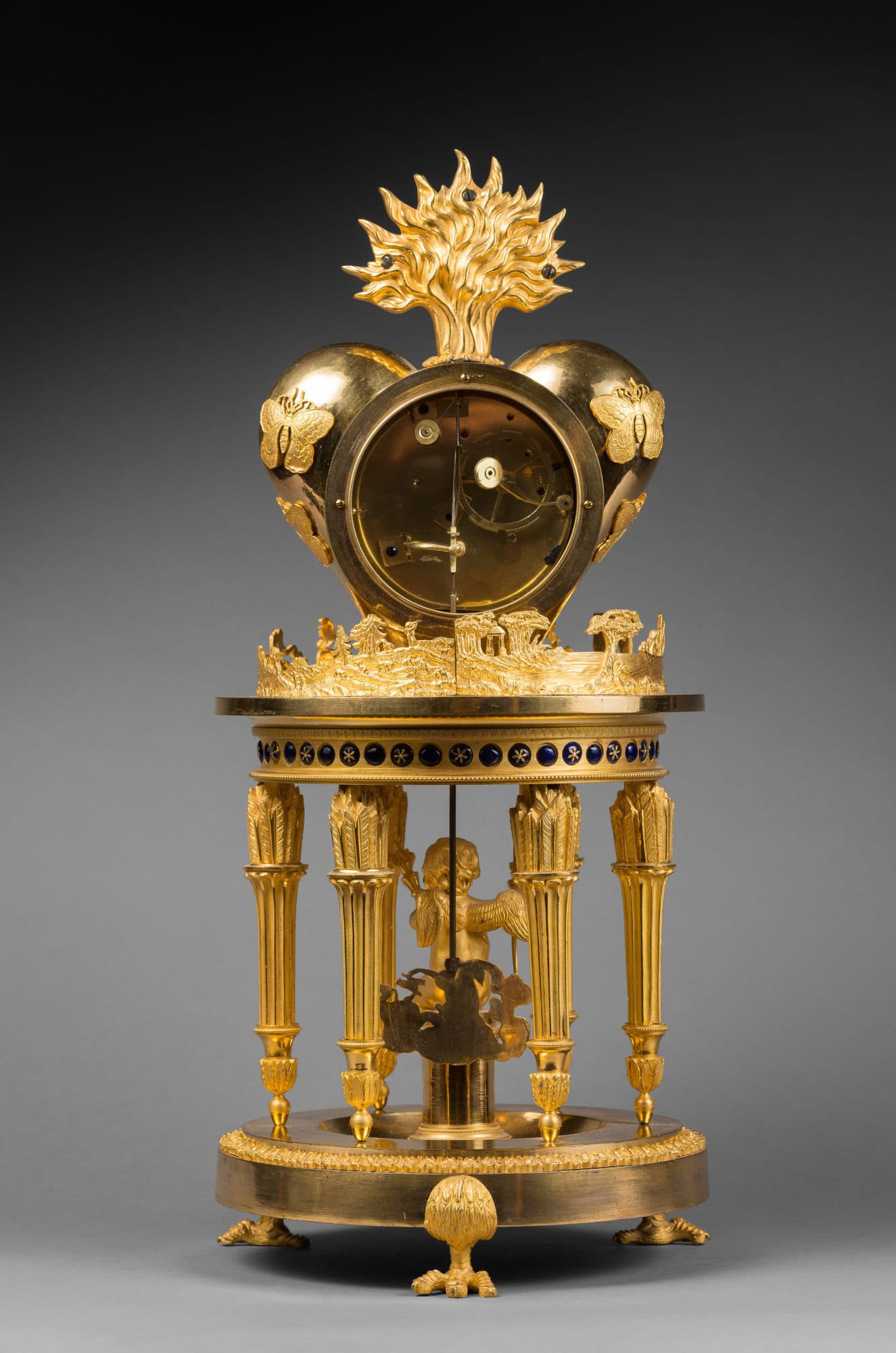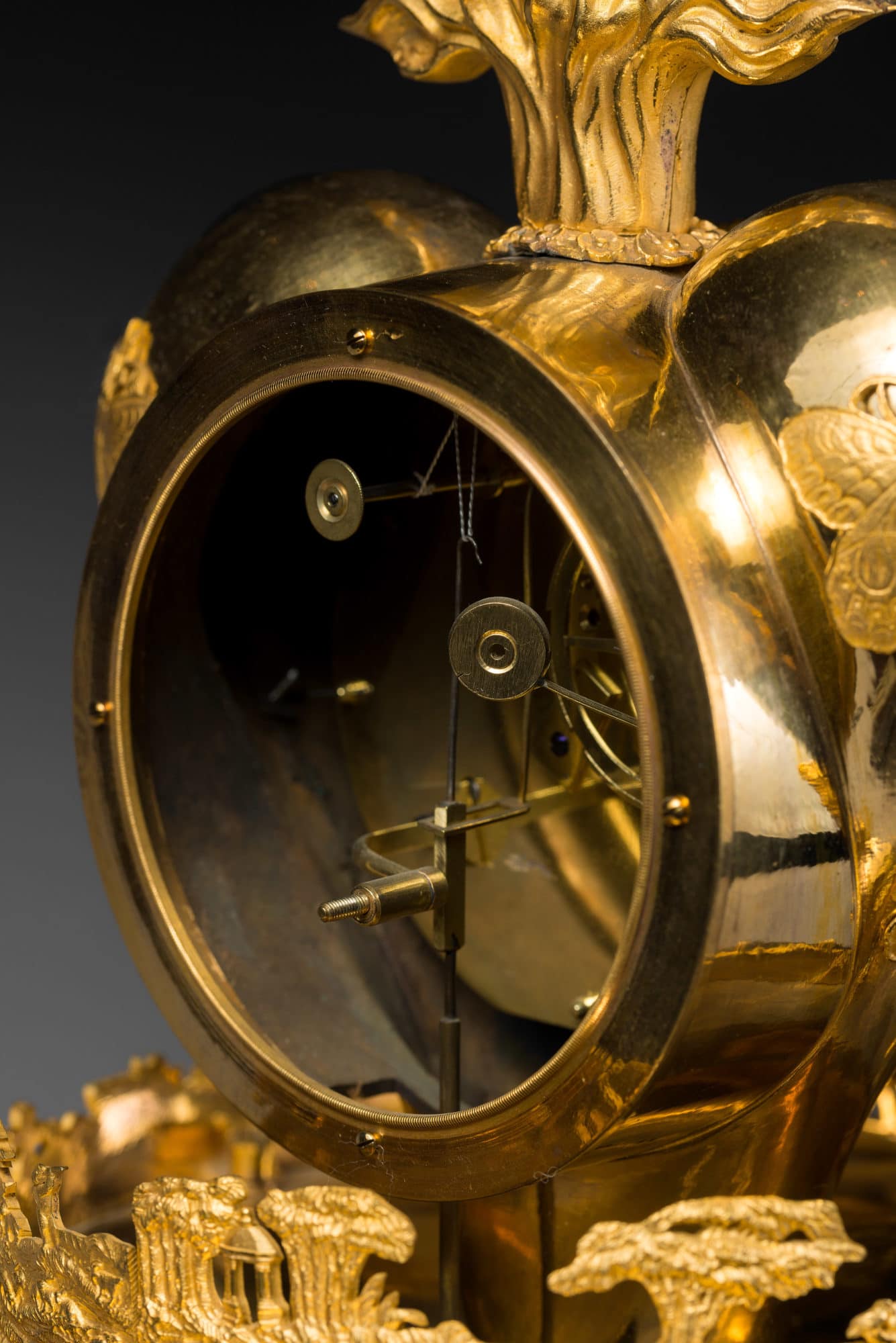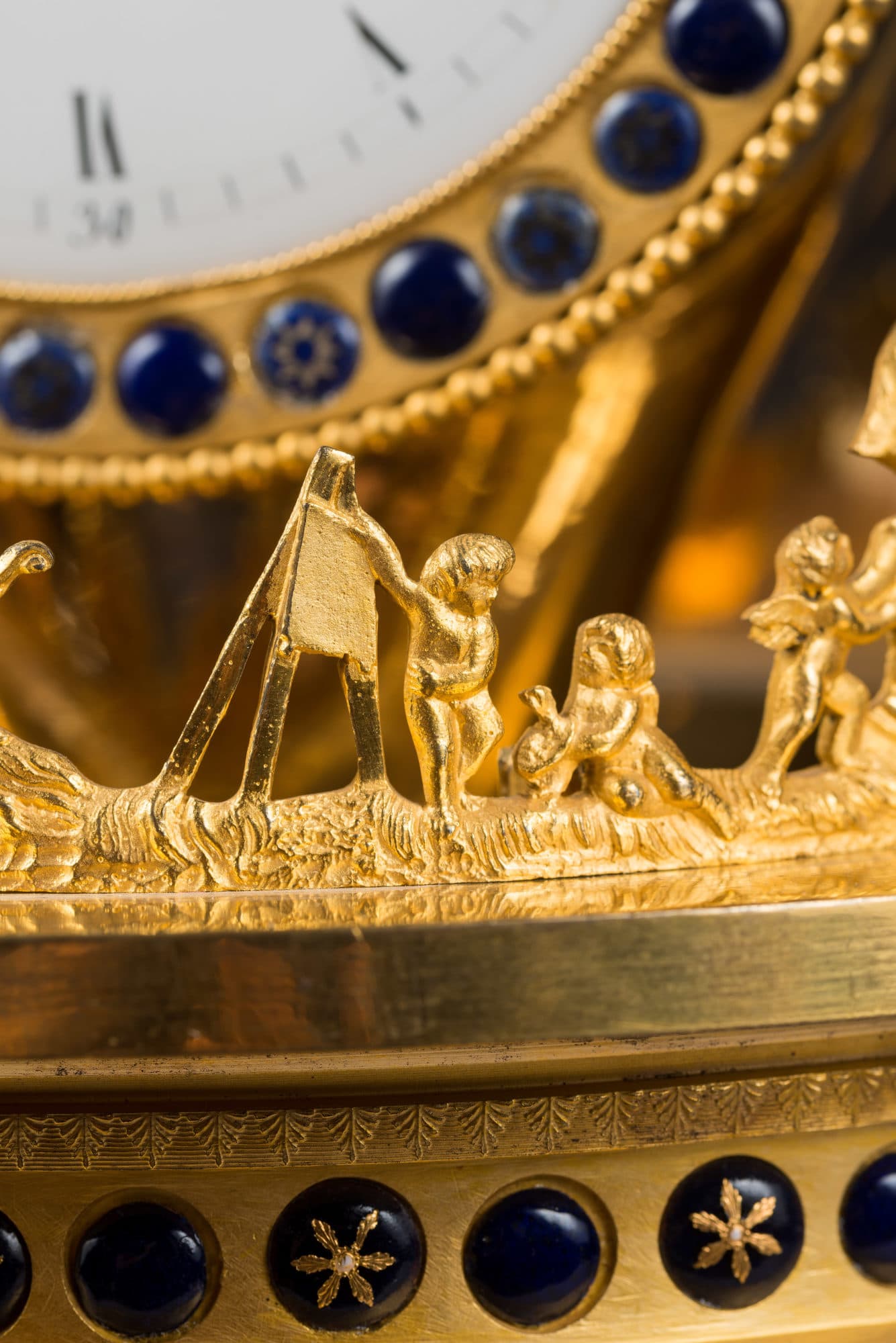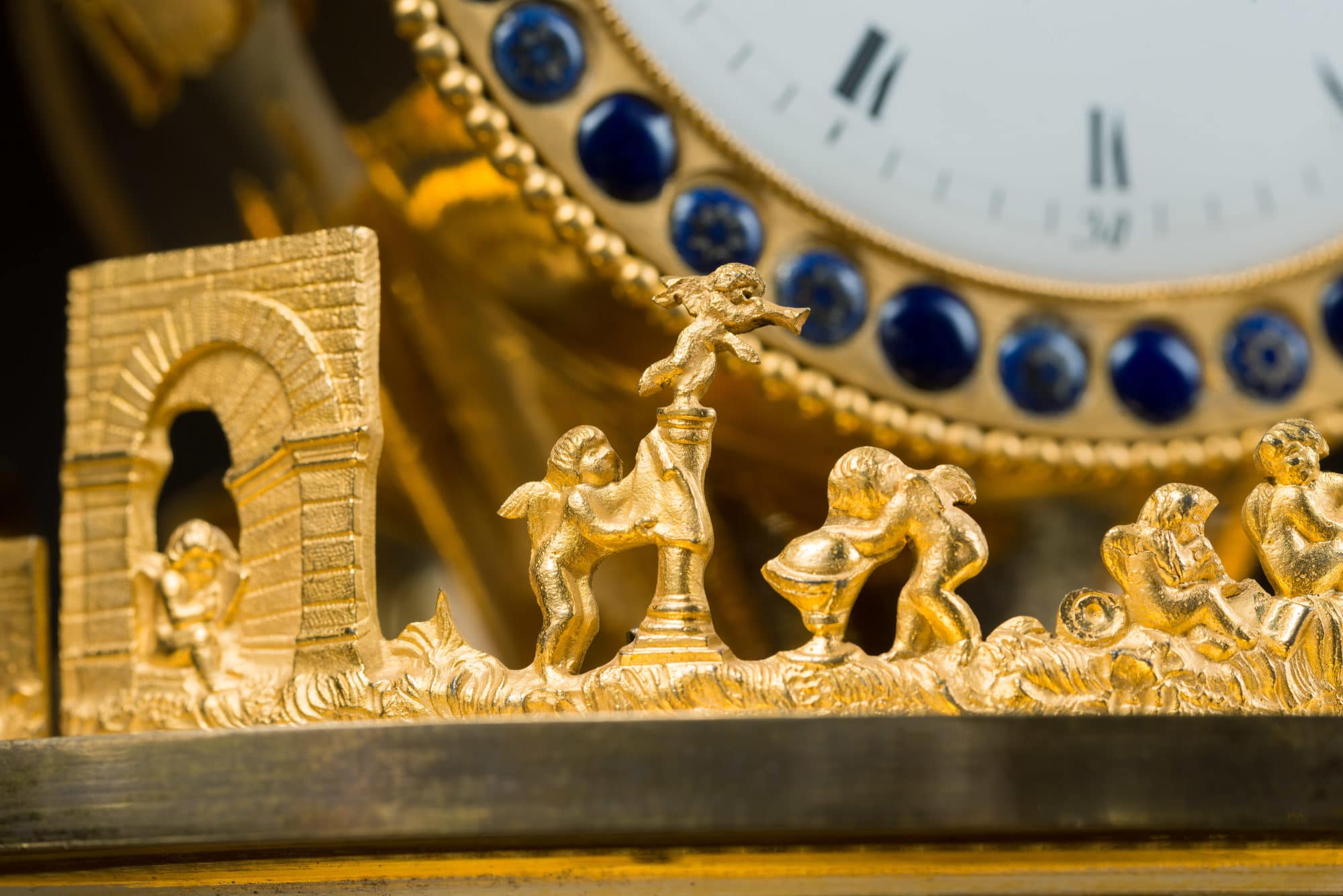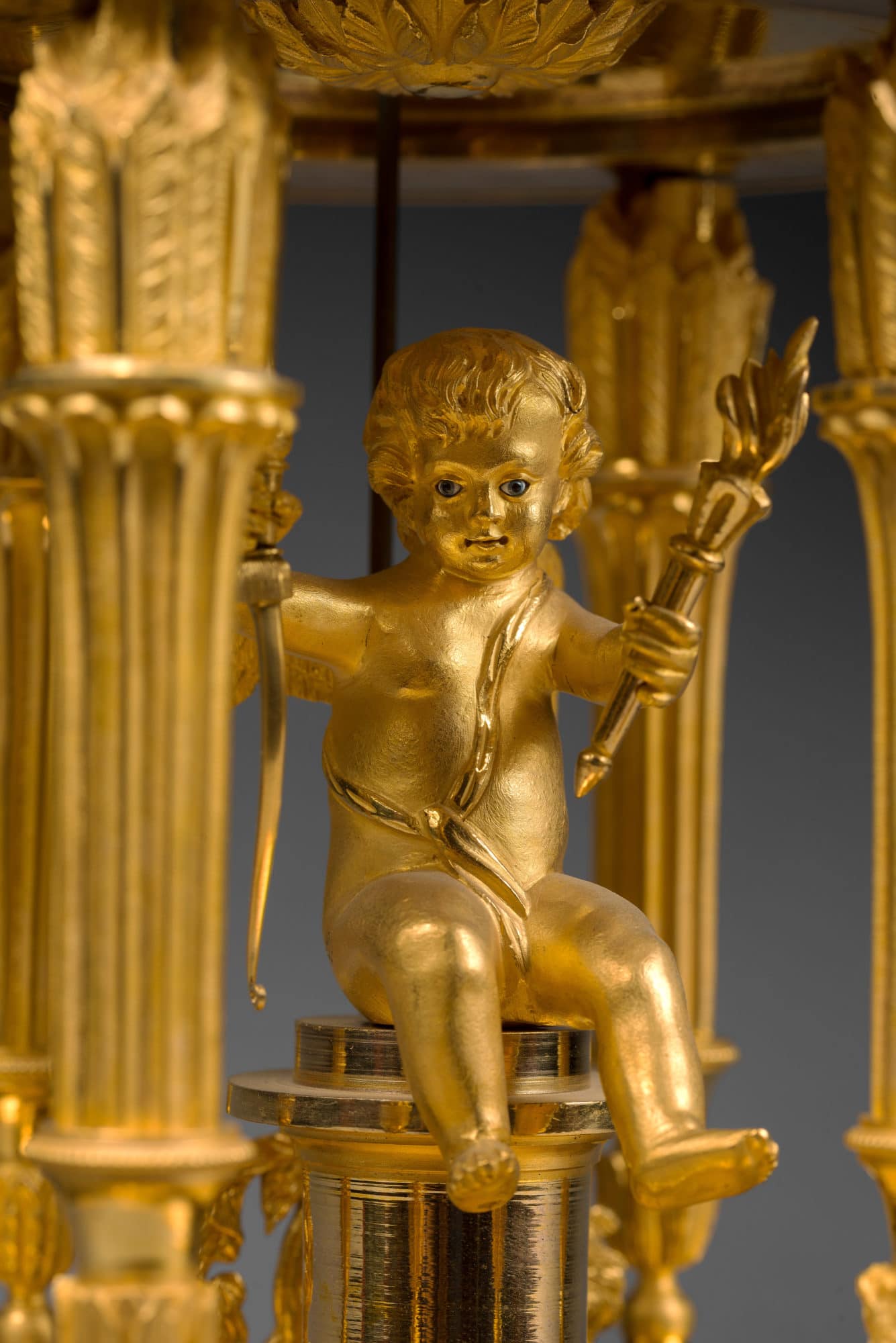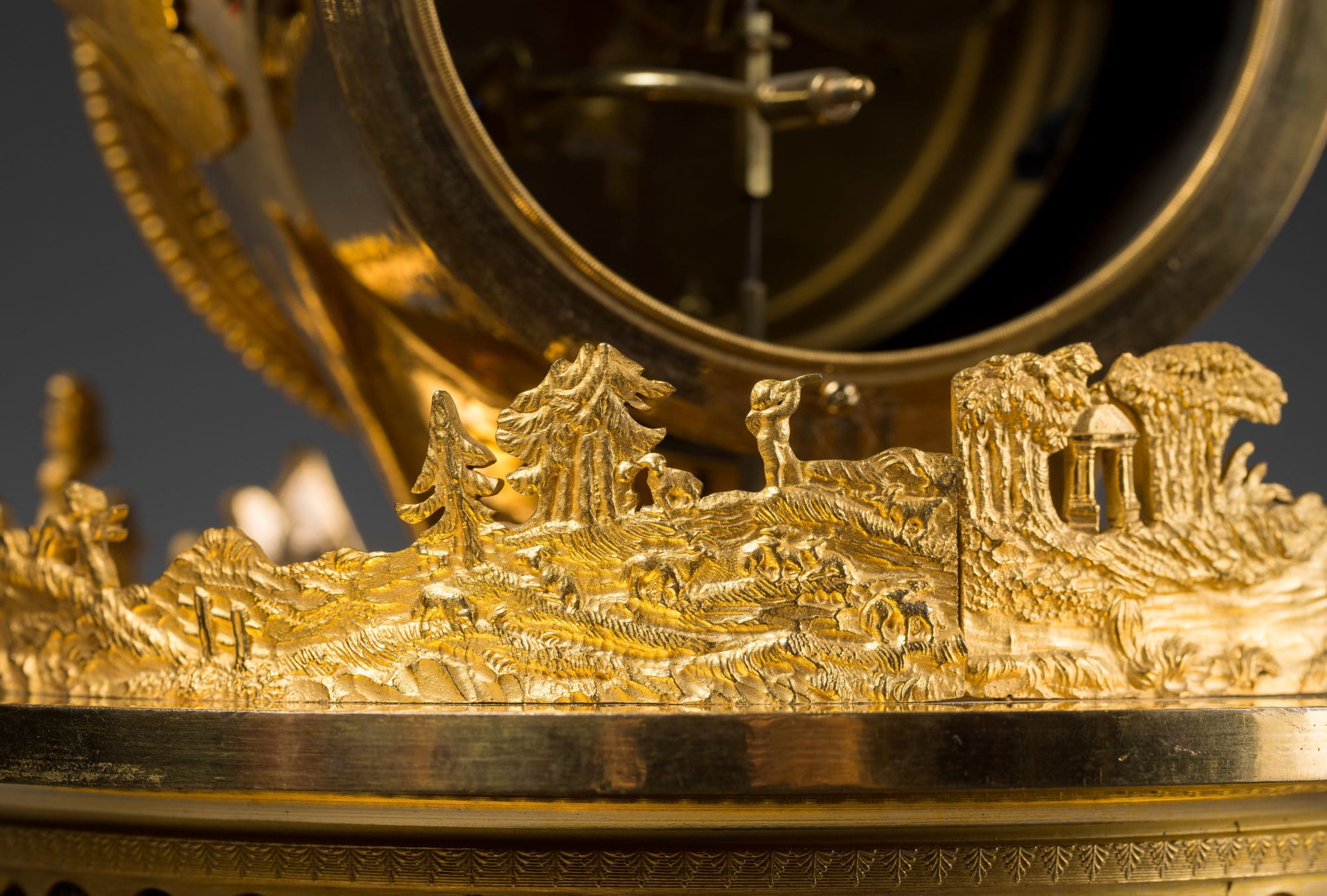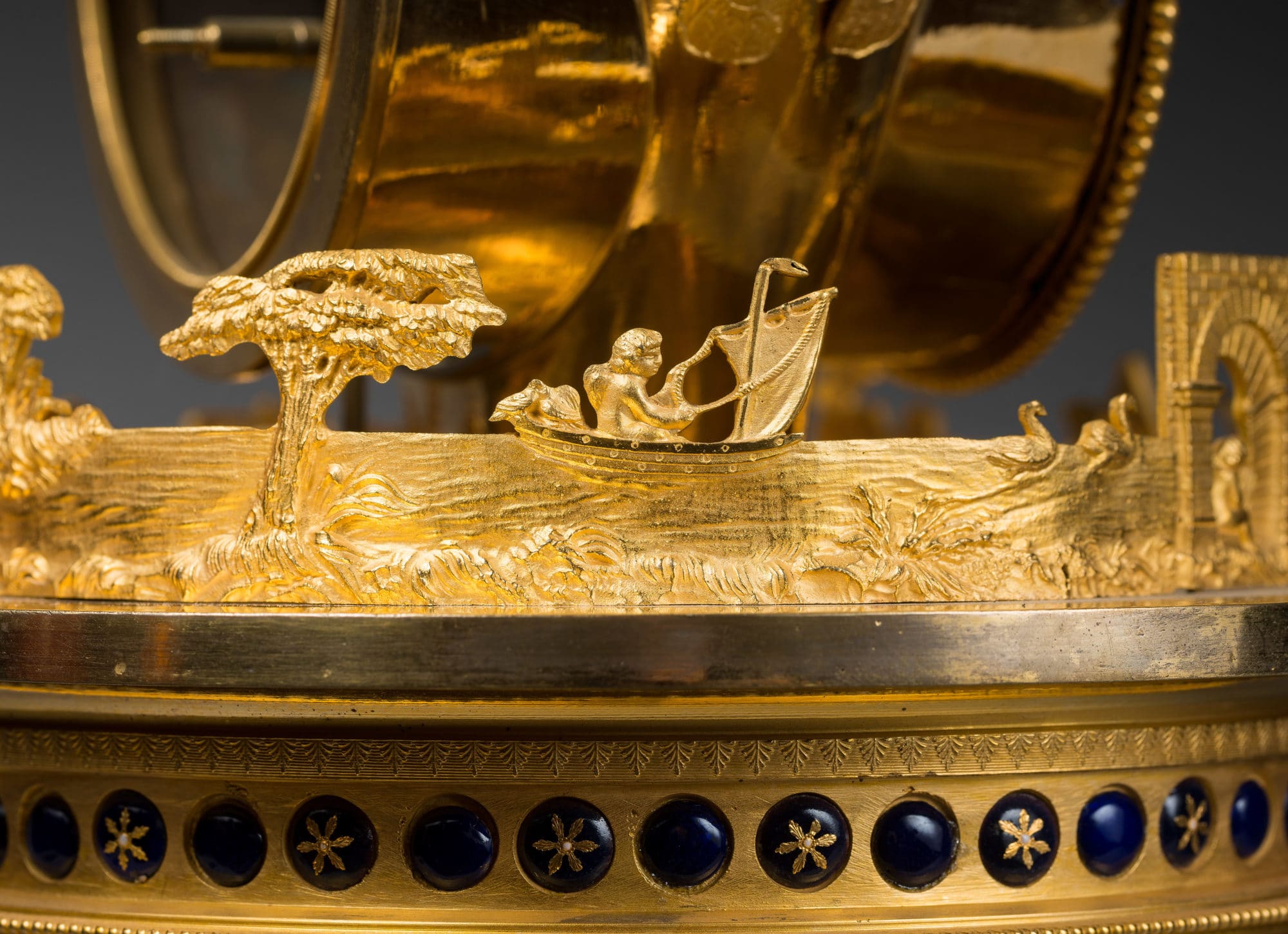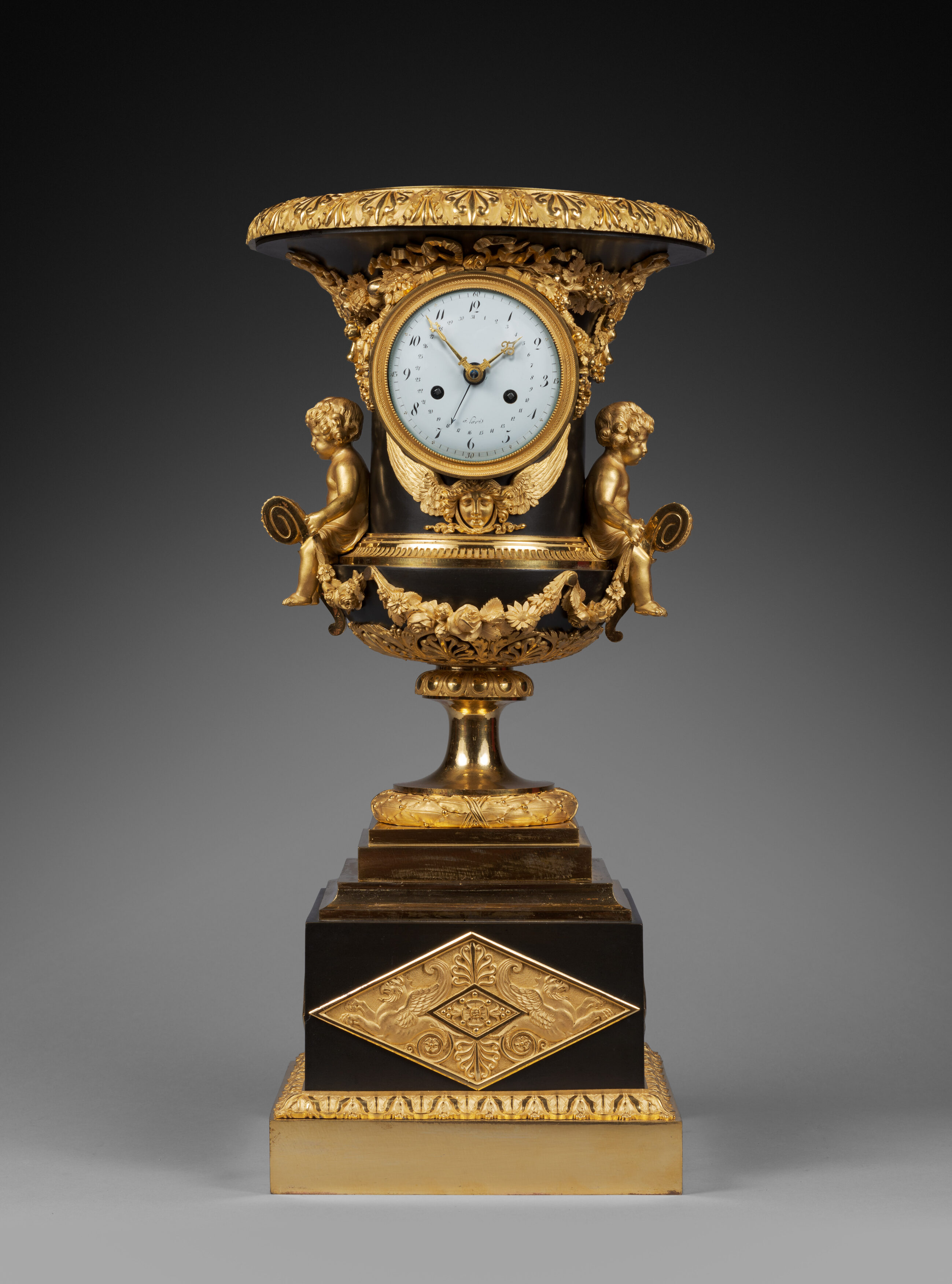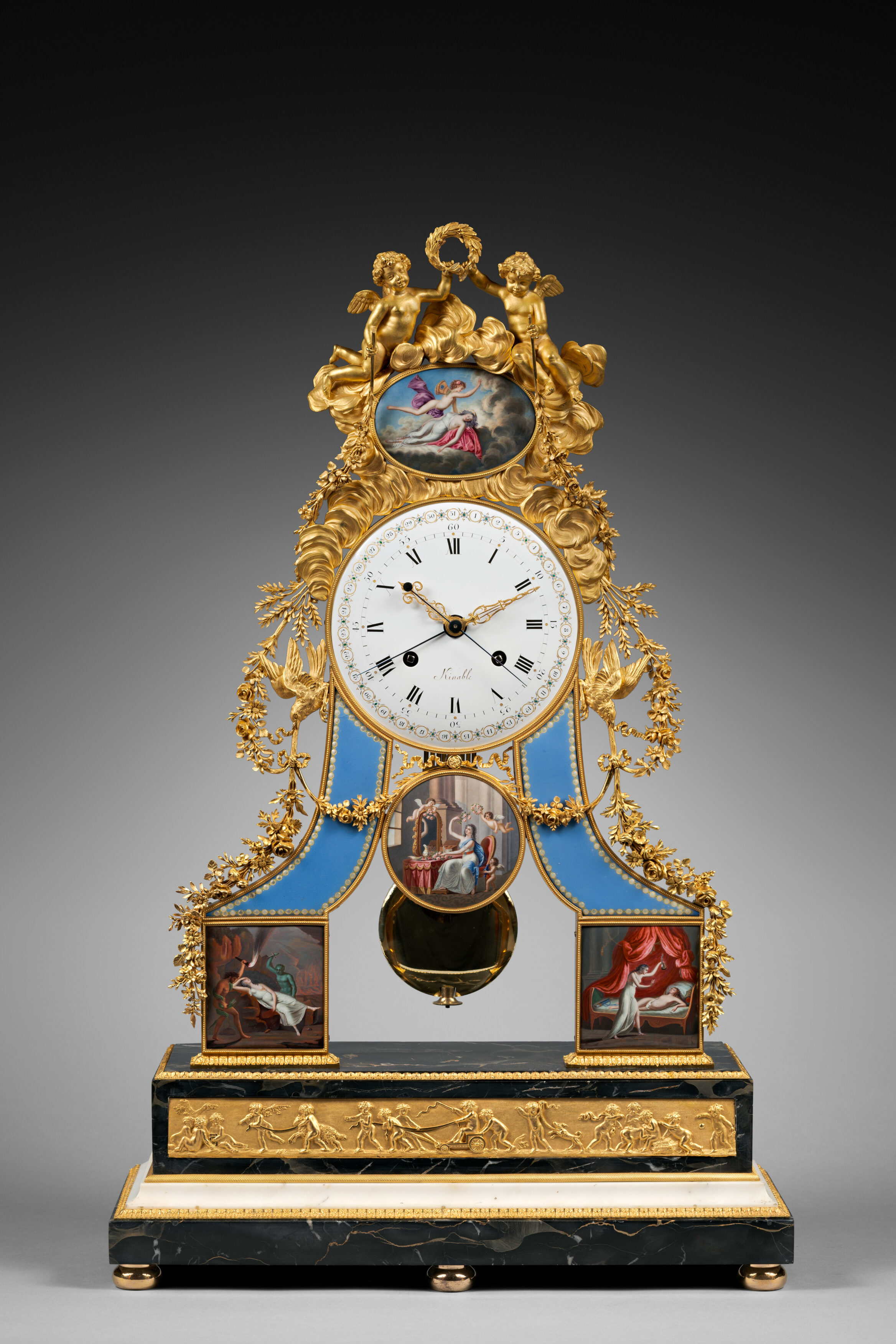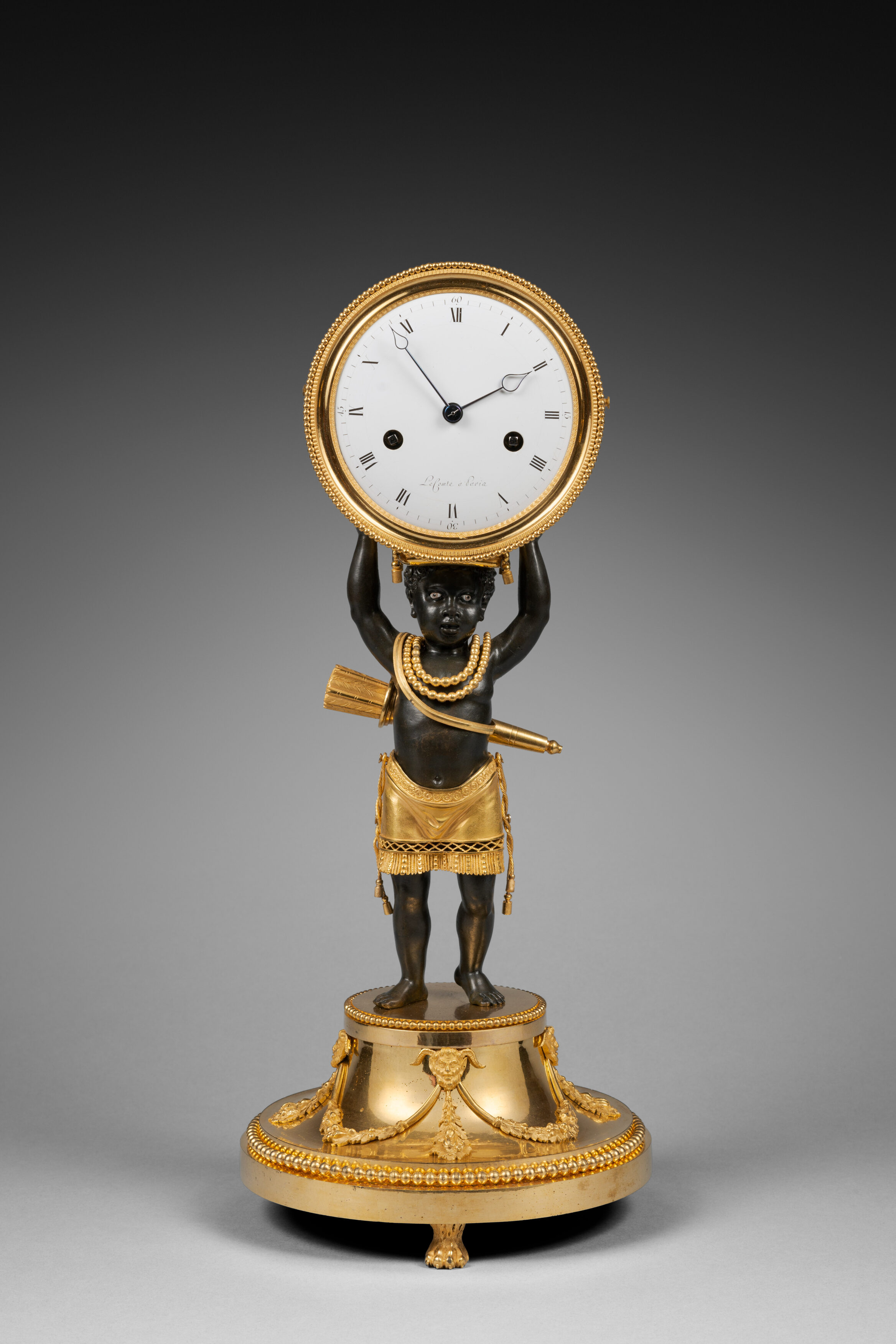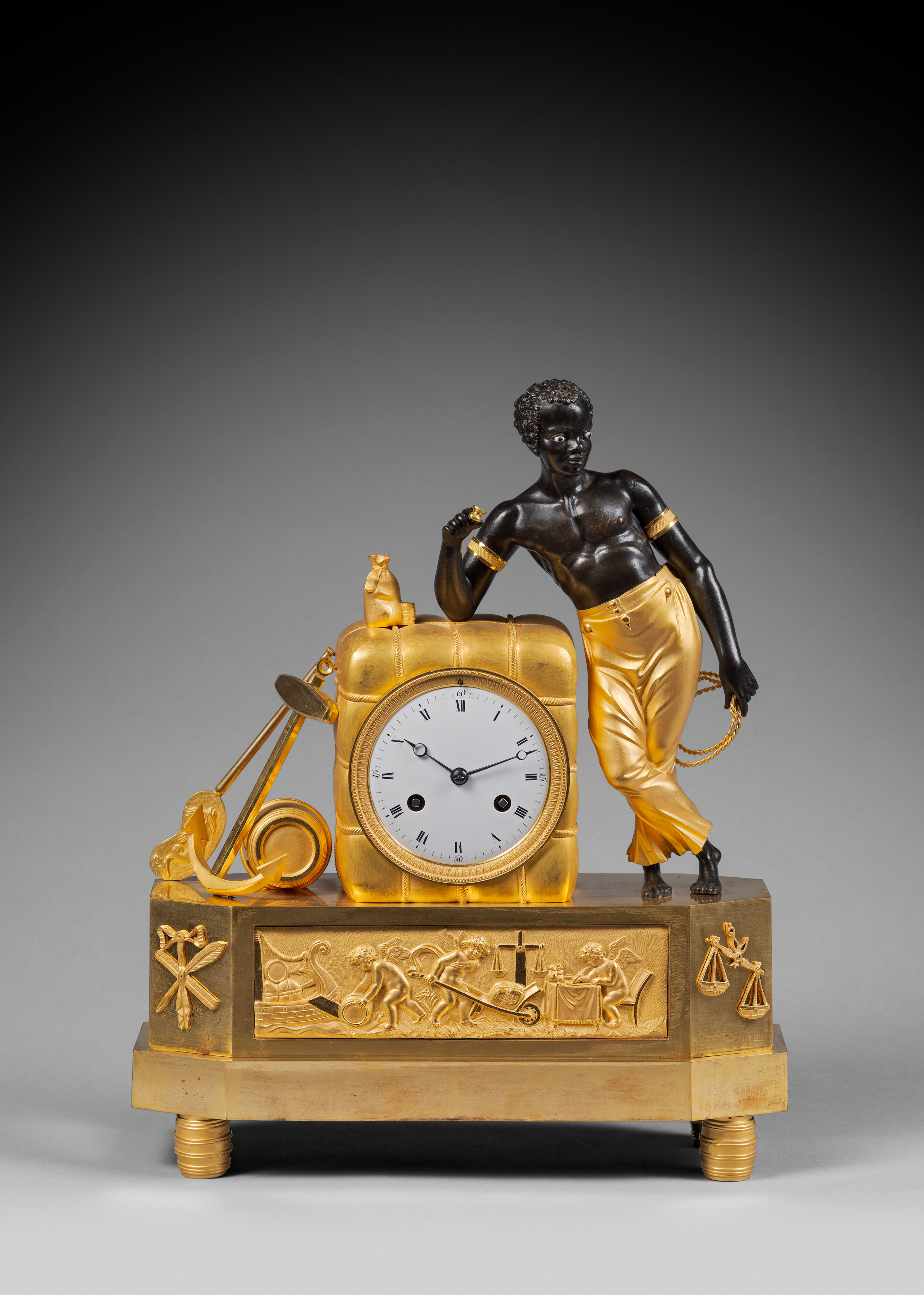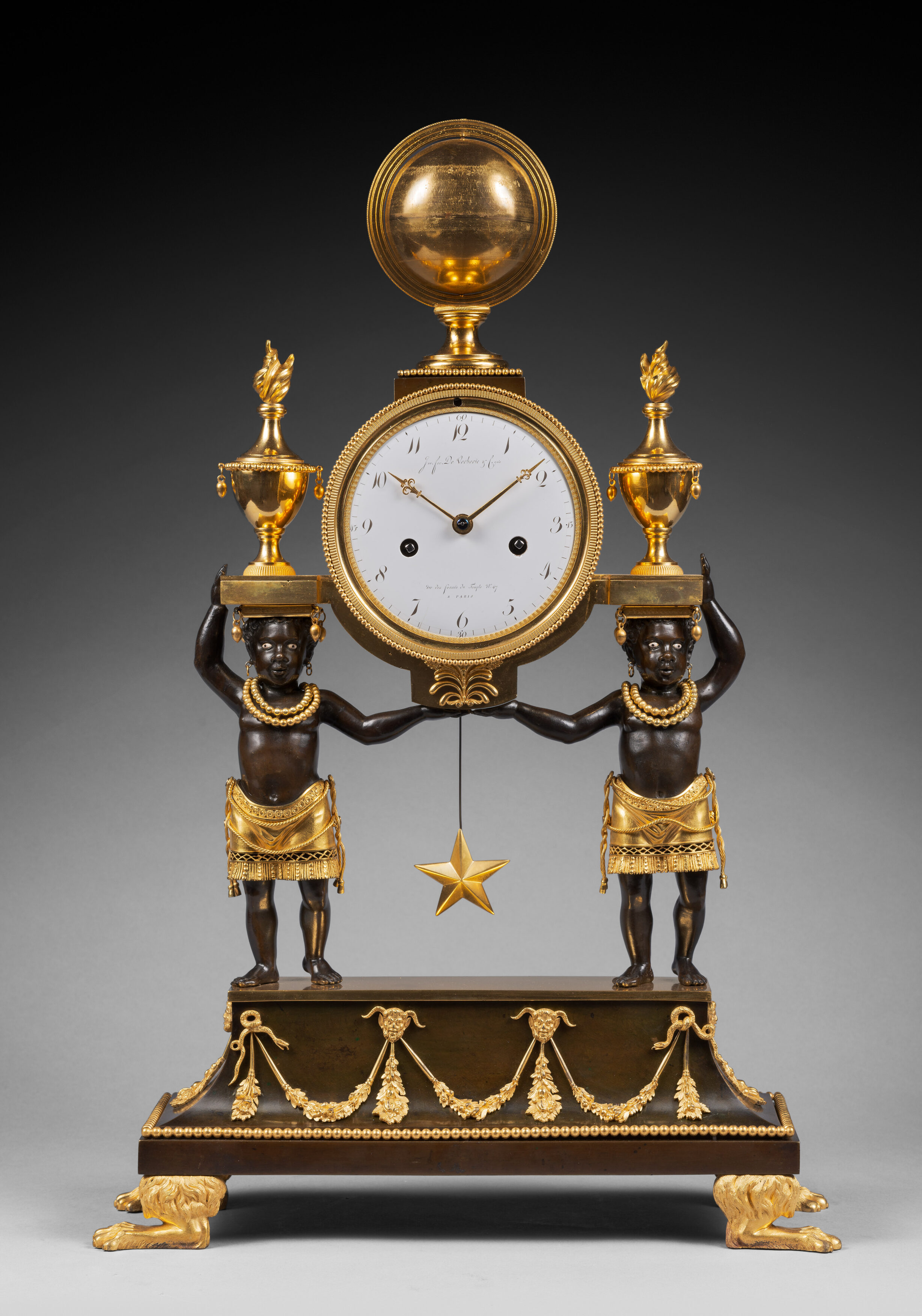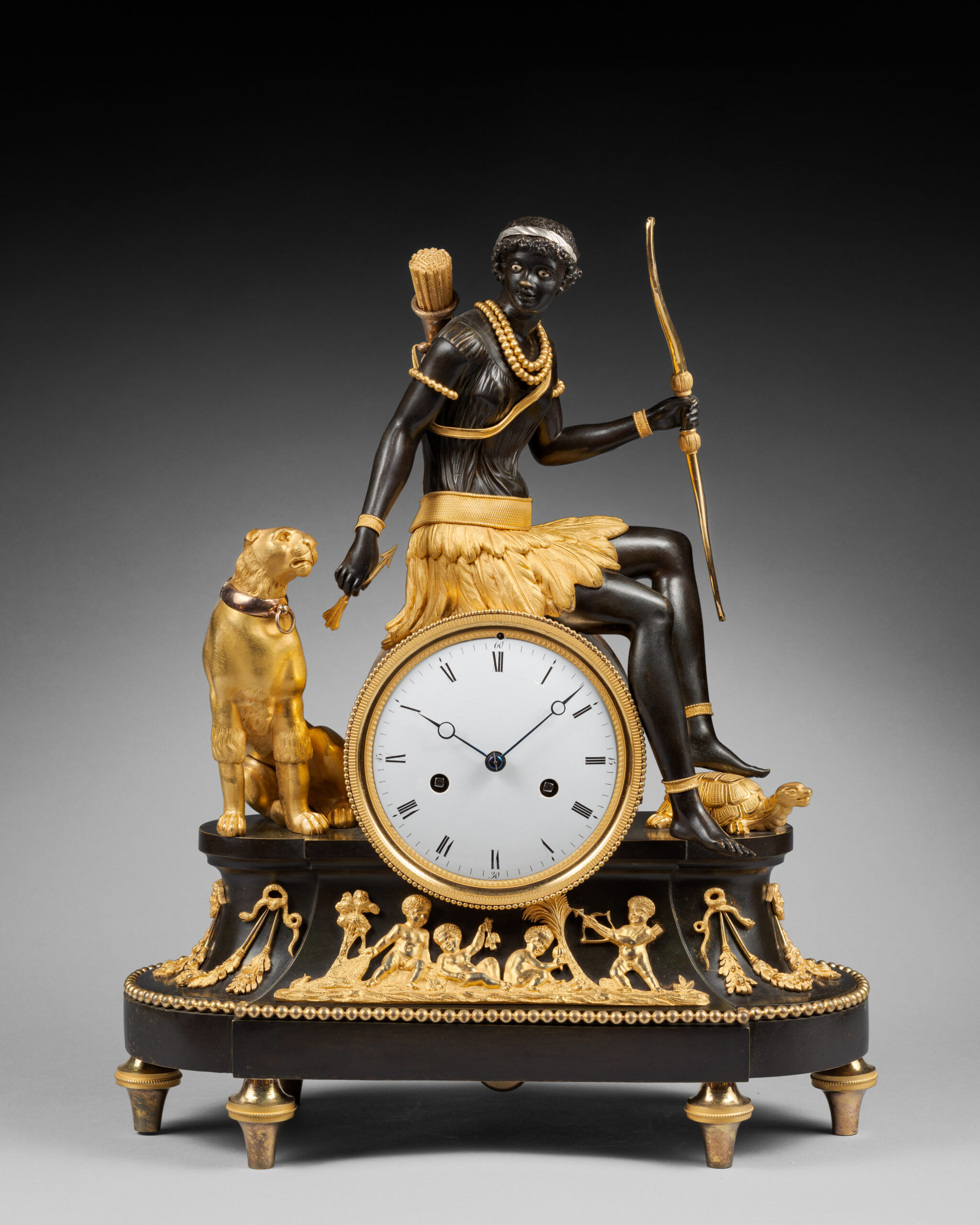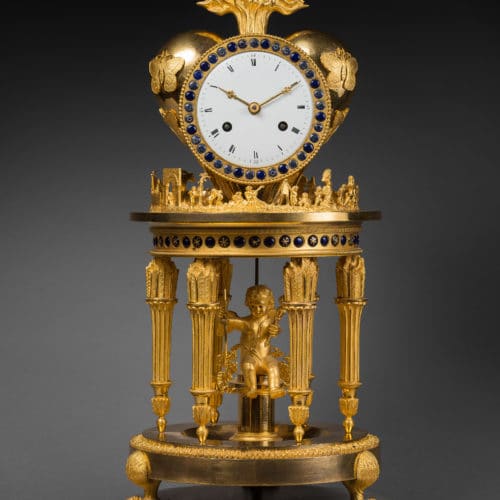Rare Chased and Gilt Bronze Mantel Clock
“The Temple of Love”
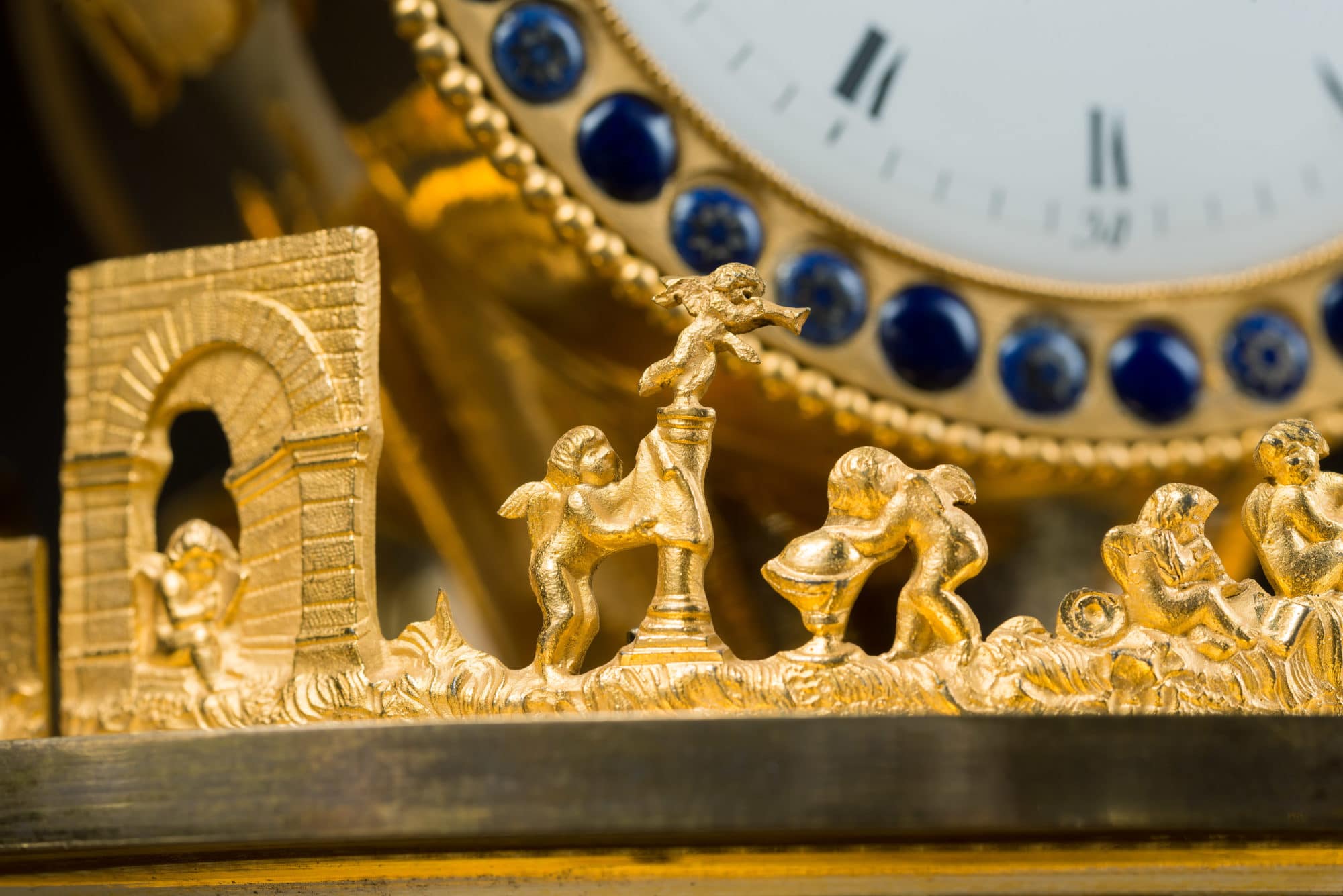
Case Attributed to Jean-Simon Deverberie (1764 – 1824)
Paris, Directoire period, circa 1795
The enamel dial indicates the hours in Roman numerals and the minutes, in fifteen-minute graduations, by means of two gilt bronze hands. The architectural case, modelled as an antique temple, is of finely chased gilt bronze. The bezel is highlighted by a row of blue glass roundels. The movement is fitted into a two-lobed case resembling a heart. The two lobes of the heart feature low relief butterflies; the case is surmounted by a flame emerging from a row of flowerets. The pediment of the rotunda-shaped temple, also highlighted by a row of blue glass roundels, some of which are also decorated with gilt star motifs, is surmounted by a frieze depicting Cupids engaged in various activities. The temple’s six tapering fluted columns are formed as quivers, with feathers in their upper portions and finely chased bases. In its centre, a winged Cupid holds a flaming torch and a bow. He is seated on a truncated column highlighted by a row of beads. The round plinth adorned with a leaf frieze is raised on eagle feet with finely chased feathers and claws. A moulded circular turquin blue marble base completes the composition.
Discover our entire collection of antique mantel clocks for sale online or at the gallery.
La Pendulerie is the specialist in fine and rare antique clocks, based in Paris.
This unusual clock is among the finest created in the last decade of the 18th century. Its design shows the influence of the late 18th century “temple” clocks; these were often “cercles tournants” clocks with four columns. They were made during the last third of the 18th century, by some of the greatest Parisian clockmakers of the day. Several such clocks are illustrated in E. Niehüser, Die Französische Bronzeuhr, Eine Typologie der figürlichen Darstellungen, Munich, 1997, p. 254; a white marble model with six columns, in the Royal Spanish Collections, is illustrated in J. Ramon Colon de Carvajal, Catalogo de Relojes del Patrimonio nacional, Madrid, 1987, p. 90, catalogue n° 73; another Temple clock, with Oriental motifs, is in the Royal English Collections (Inv. RCIN 39660). These horological creations, often evoking Love and its transient nature, were inspired by one of the most famous edifices of the time: the “Temple of Love”, constructed at Versailles in the gardens of the Petit Trianon by Richard Mique in 1778 for Marie-Antoinette, was greatly admired by connoisseurs and artists of the day.
While the present example features the classical rotunda construction, it differs from other similar clocks of the type due to its elaborate composition and to the heart-shaped case into which the dial is fitted. In this it is typical of the horological creations of the Directoire period, which embody the ornamental codes of the Ancien Régime, while its elaborate design heralded the opulent style of the Empire period. It should be emphasized that this model is exceptionally rare; to the best of our knowledge only one other identical clock is recorded. Its dial is signed Leroy à Paris and it is today in a private collection (shown in P. Kjellberg, Encyclopédie de la pendule française du Moyen Age au XXe siècle, Paris, 1997, p. 332).
Jean-Simon Deverberie (1764 - 1824)
Jean-Simon Deverberie was one of the most important Parisian bronziers of the late 18th century and the early decades of the following century. Deverberie, who was married to Marie-Louise Veron, appears to have specialized at first in making clocks and candelabra that were adorned with exotic figures, and particularly African figures. Around 1800 he registered several preparatory designs for “au nègre” clocks, including the “Africa”, “America”, and “Indian Man and Woman” models (the drawings for which are today preserved in the Cabinet des Estampes in the Bibliothèque nationale in Paris). He opened a workshop in the rue Barbette around 1800, in the rue du Temple around 1804, and in the rue des Fossés du Temple between 1812 and 1820.
